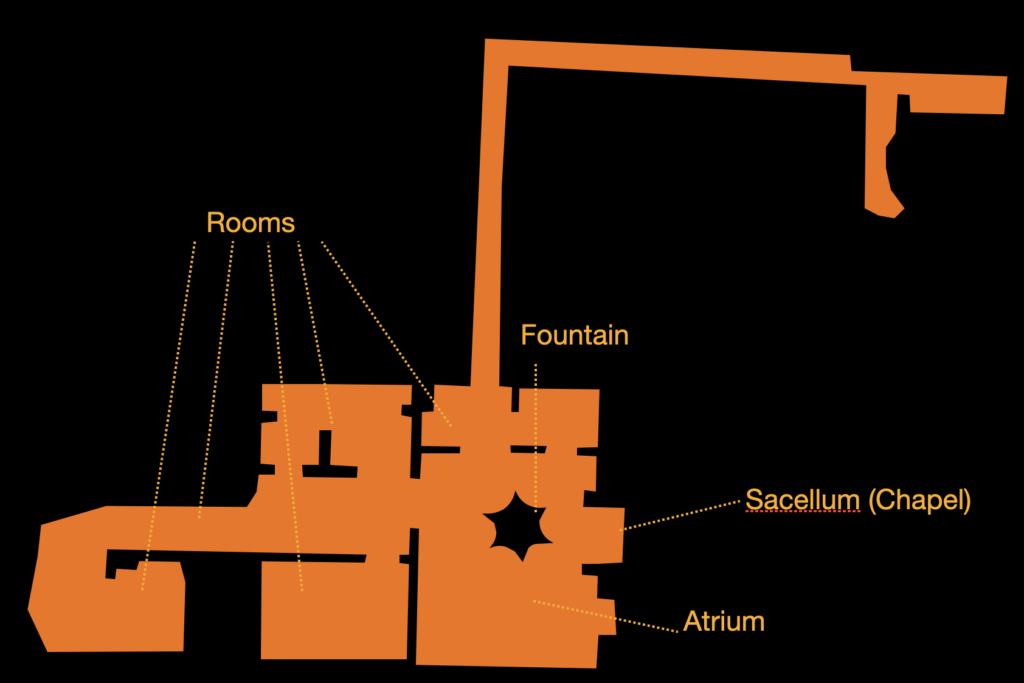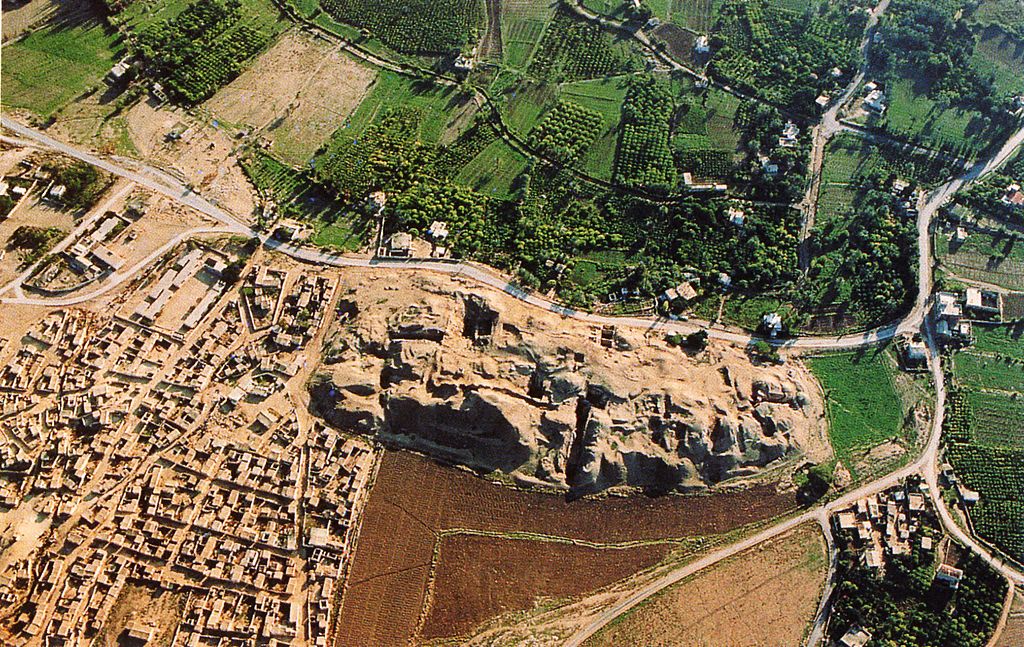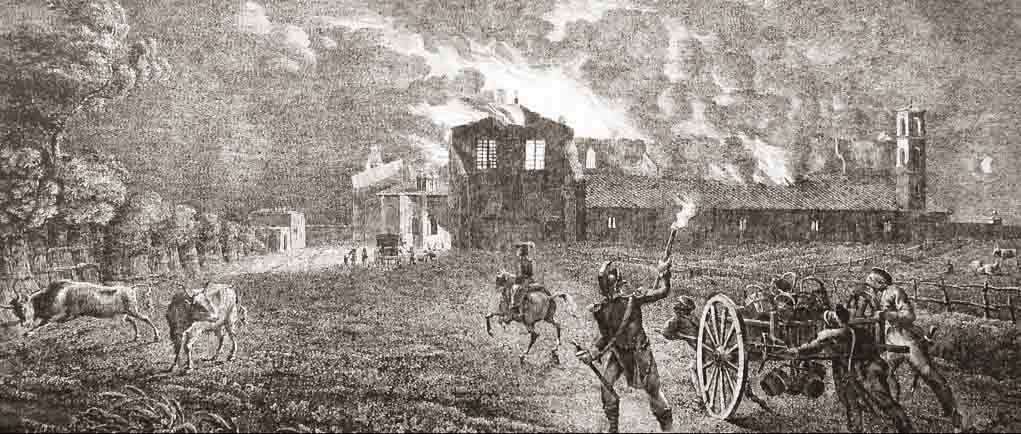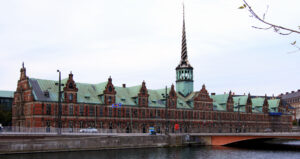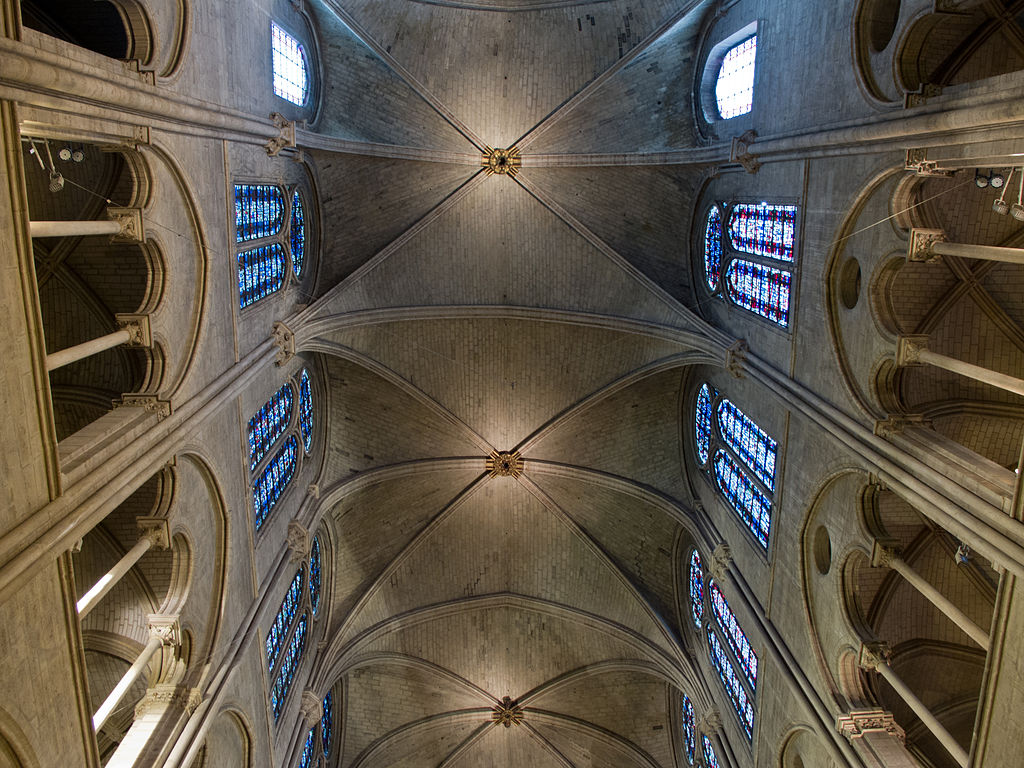The Fire of the Basilica of St. Paul Outside the Walls in Rome: a Scientific Investigation
In the investigation about the causes of the St Paul Outside the Walls fire, the widely accepted theory of smoldering combustion faces challenges in explaining the delay between ember fall and the manifestation of flames, especially considering the timeframe from site abandonment to fire detection.
In 2023, in commemoration of the 200th anniversary of the fire of the Basilica of Saint Paul Outside the Walls in Rome, several texts were published regarding the political and cultural context of the time, as well as various aspects of the reconstruction of what was, before the fire, the basilica most visited by pilgrims in Rome.
A 2023 article, by Stefano Marsella and Monica Calzolari “The Fire of Saint Paul Outside the Walls: a very retrospective scientific investigation“, drawing from contemporary sources, aims to highlight certain incongruities in official reports, positioning the cause of the fire as more of an enigma to unravel rather than an established fact.
While a wealth of historical literature chronicles the basilica’s history up to the fire and subsequent reconstruction, texts exploring the fire’s cause are scarce and typically lack a rigorous investigative approach. Recognizing this gap, the authors undertook a reflective exploration, integrating scientific investigation methods informed by the National Fire Protection Association standard NFPA 921-2021 “Guide for Fire and Explosion Investigations”. Due to the absence of physical artifacts that could provide direct insights into the fire’s impact on materials and structures, the authors applied the NFPA 921-2021 methodology selectively. They delved into identifying needs, defining the problem, collecting and analyzing data, and developing and testing hypotheses, culminating in the formulation of final hypotheses.
Contemporary news reports attributed the fire to the negligence of workers tasked with repairing the roof or, according to some accounts, the gutters. The Chronicle of the attached monastery linked the event to a dispute between masons and tinsmiths. However, critical details remain elusive in all accounts. Questions surrounding the workers’ equipment on the construction site, the nature of the ongoing intervention on that fateful evening, and how hot coals fell on wooden elements without workers detecting potential damage persist unanswered. In response to these uncertainties, the authors sought to elucidate the fire’s origins by juxtaposing historical sources with recent research findings.
The historical information presented here relies primarily on chronicles published between July 16 and 31, 1823, with additional references to various handwritten documents associated with them. To interpret the combustion processes, the authors consulted scientific literature on the behavior of materials during fires, focusing particularly on wood.
Details regarding the basilica and its condition were extracted from the writings of Nicola Maria Nicolai and Angelo Uggeri. The Diario di Roma, a journal covering local and international issues, played a crucial role in providing insights into the state of the basilica and the damage inflicted by the fire. Issues dated July 16, 1823, and July 26, 1823, addressed these aspects. The magnitude of the damages becomes apparent through a multitude of images created by painters and engravers in the weeks immediately following the incident. These artists were drawn to the significance of the building and the gravity of the event, reflected in their works.
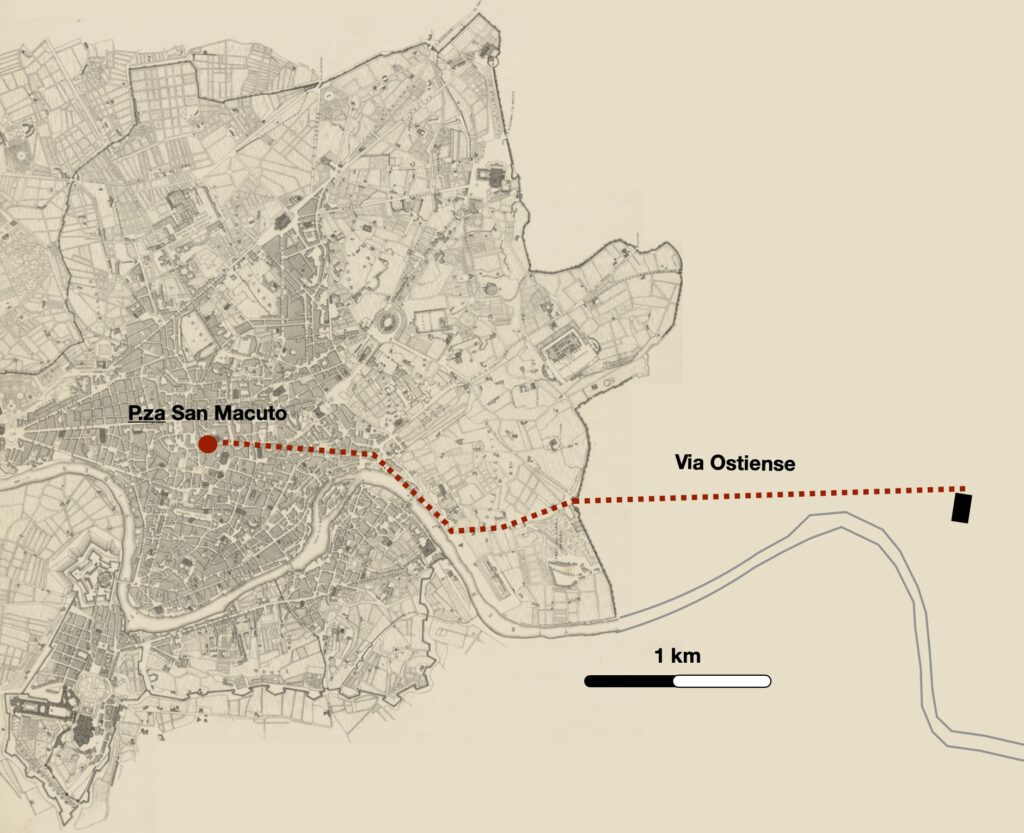
In unraveling the mysteries surrounding the 1823 fire at St. Paul Outside the Walls, the absence of direct testimonies from involved workers and the lack of information on the ongoing work make it challenging to definitively identify the ignition and propagation mechanisms. According the authors, the scientific literature, presents two plausible scenarios: an accidental event involving burning coals falling during construction work, leading to smoldering combustion or deliberate arson after the day’s work, initiating a fire that spread across the wooden structures.
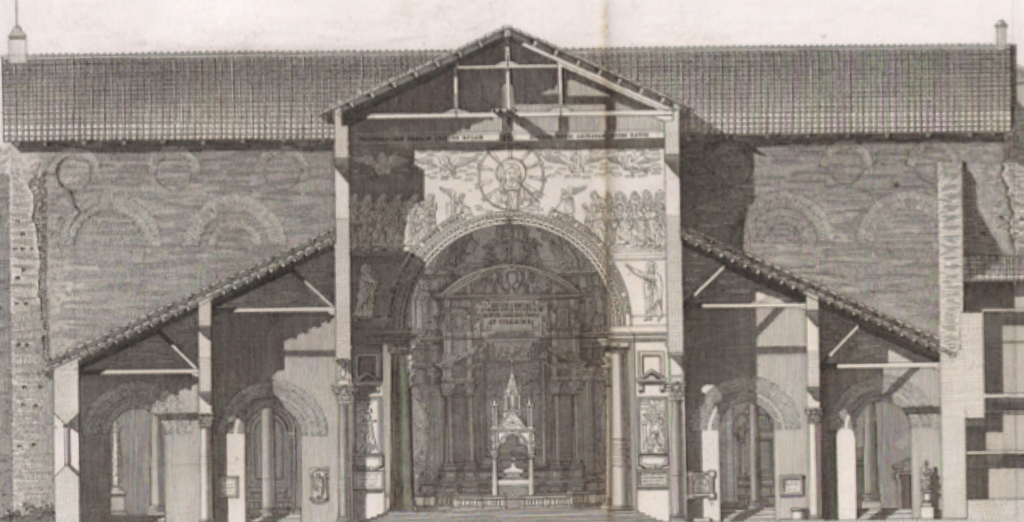
The widely accepted theory of smouldering combustion faces challenges in explaining the delay between ember fall and the manifestation of flames, especially considering the timeframe from site abandonment to fire detection. Additionally, an alternative scenario proposed by the “Postilla anonima” suggests intentional acts after workers left the site, supported by the absence of workers’ names in chronicles and ongoing investigations weeks after the incident.
To refine the understanding of the facts, further studies on fire spread within the roof elements and additional archival research on contemporary investigations are essential. These efforts promise to shed light on the true nature of the 1823 basilica fire, bringing us closer to unraveling the enigma that has persisted for two centuries.
More on the context of the fire: Professor Richard Wittman’s upcoming book “Rebuilding St. Paul’s Outside the Walls – Architecture and the Catholic Revival in the 19th Century” scheduled for release in 2024 and Nicola Camerlenghi’s St. Paul’s Outside the Walls – A Roman Basilica, from Antiquity to the Modern Era.
More on the reconstruction of the St Paul outside the Walls Basilica

